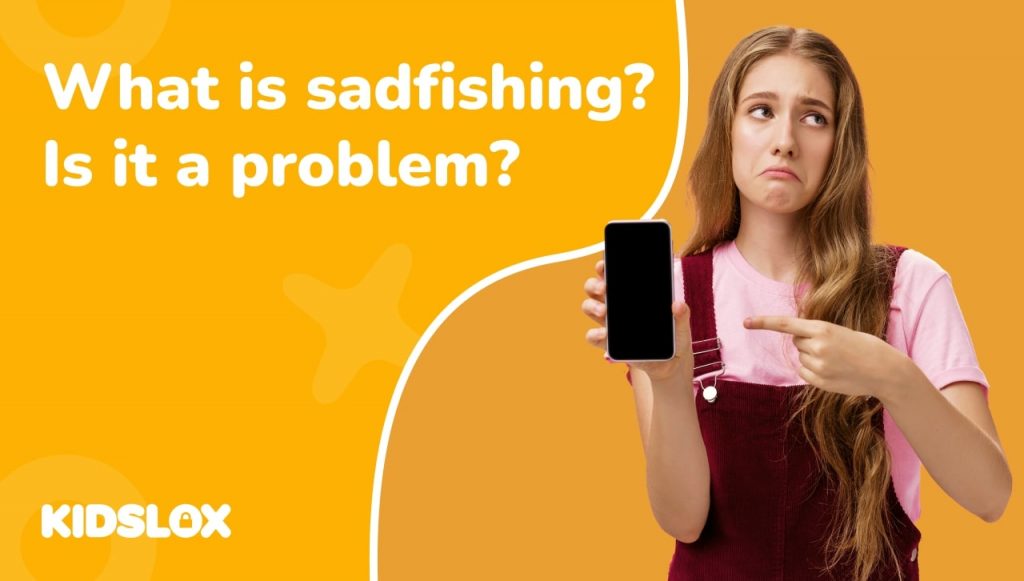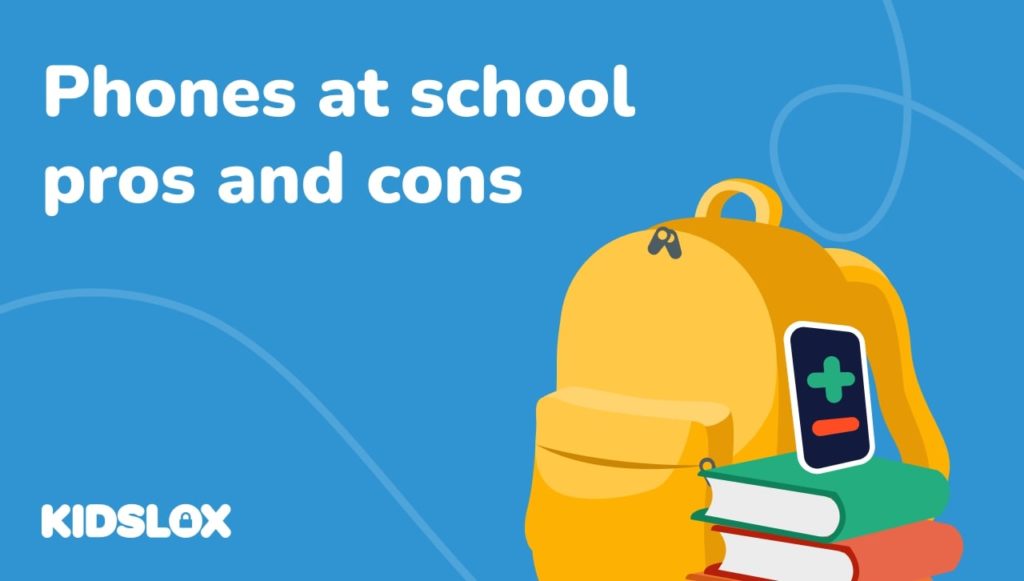What is it and why do parents need to be concerned?
In our 24/7 connected digital world, a new trend has emerged causing significant concern among parents and mental health professionals: “sadfishing”.
What does ‘sadfishing’ mean?
The phrase was first coined by journalist Rebecca Reid when celebrity Kendall Jenner posted a seemingly perfect picture of herself while lamenting about her ‘bad skin’. Reid noted that this was far from an isolated incident, with people from all walks of life taking to social media to exaggerate their problems, seemingly in a bid for attention and sympathy.
So prolific is this new type of online behavior, sadfishing memes have been created, with many taking the concept lightly and creating comedic content around it. The reality of sadfishing is anything but a joke. This type of attention-seeking can lead to serious consequences, especially for impressionable young people who are at a crucial stage of their personal and social development.
The boundary between private and public life is becoming increasingly blurred in our hyper-connected society. This is particularly true for children and teenagers who are growing up with social media as their primary method of communication. For them, sharing personal details, including feelings of sadness, anxiety, or depression, can feel like a natural part of their online interaction.
However, it becomes a cause for concern when this sharing becomes excessive and manipulative, often with the intention of garnering sympathy, attention, or even material gains. This is the core of sadfishing: the use of emotional suffering as a tool for manipulation.
Sadfishing is becoming increasingly common, and parents and mental health professionals are becoming more concerned than ever. Here are some (hypothetical) examples of sadfishing in action:
Jane, a high school student, is having a tough time with her math homework. Instead of just stating that she’s struggling, she posts on her social media saying she’s “the dumbest person ever” and “can’t do anything right.”
Mike, a recent graduate, didn’t get the first job he applied for. He posts a lengthy, emotional status on Facebook about his repeated failures and how he’ll never find employment, despite only having tried once so far.
Tom is feeling lonely during the weekend. He tweets about how he has “no friends” and how he’s “always alone”, even though his friends were just busy for one weekend.
Why do people sadfish?
It’s thought that the phenomenon of sadfishing is born out of our hyper-connected society where the boundary between private and public life is becoming increasingly blurred. This is particularly the case for children and teenagers who are growing up with social media as a primary method of communication. For them, sharing personal details, including feelings of sadness, anxiety, or depression, can feel like a natural part of their online interaction.
However, sadfishing is when this sharing becomes excessive and manipulative, often with the intention of garnering sympathy, attention, or even material gains. It can be a cry for help, a tactic to gain more followers, or a manipulative tool to attract a certain response.
In a study conducted by Digital Awareness UK, a leading digital wellness agency, a sample of 50,000 children aged between 11-16 were questioned about their online habits. Alarmingly, the findings suggested that when these youngsters sought genuine emotional support online, they were left feeling neglected, often not receiving the level of response they anticipated.
It’s an unkind reality for these young minds, who, unlike their celebrity idols, aren’t backed by fanbases of millions. Youngsters, instead, have their peers – a group that’s often notorious for gossip and harsh judgment.
Indeed, the celebrity influence on young individuals’ online behaviors is profound. A celebrity expressing their melancholy to their 1.7 million followers elicits a wave of sympathetic responses. The same cannot be said for an average 14-year-old with a modest following of 75. The disparity is significant, and the impact of this superficial digital support, fleeting and hollow.
The Risks of Sadfishing
While it’s important to encourage children to express their emotions and seek support when they need it, sadfishing can be harmful.
Firstly, by relying on external validation to cope with emotional difficulties, children can struggle to develop healthy coping mechanisms.
Moreover, sadfishing can attract the wrong kind of attention, such as trolls, bullies, or even predators. In an attempt to gain sympathy, children may inadvertently expose themselves to more harm, leading to a cycle of emotional distress.
There’s also the risk of desensitization. We have already seen this happening through the creation of sadfishing memes. As more and more people engage in sadfishing, the constant exposure to these emotionally charged posts can lead to compassion fatigue, where individuals become indifferent to others’ emotional distress.
Recognizing Sadfishing
Now we understand the meaning of sadfishing, it’s important to recognise the signs of it. This can be challenging. Teens naturally undergo a host of emotional changes, which makes genuine cries for help harder to spot. However, there are some signs to look out for:
1. A Pattern of Emotional Posts
Frequent dramatic posts about personal problems, feelings of worthlessness or hopelessness, or vague messages indicating something is wrong could indicate sadfishing.
2. Attention-seeking Comments
If your teen’s posts often prompt friends to respond with concern or sympathy, they might be sadfishing. They may respond to these comments with vagueness or amplify their emotional distress.
3. Contradictory Behavior
If your teen’s online persona doesn’t match their behavior in real life, they may be sadfishing. For instance, if they frequently post about feeling lonely or unloved but seem content and well-adjusted offline.
4. External Validation
Teens who sadfish often seek validation from their online peers rather than confiding in real-life friends, family, or mental health professionals.
If you suspect your teen is sadfishing, approach them with empathy and understanding. Open communication is key. Encourage them to express their feelings in a healthy, constructive way and seek professional help if necessary.
Guiding Children in the Digital Age
When it comes to guiding children in this complex landscape, open communication is key. Talk to your child about sadfishing and the potential dangers it can pose. Encourage them to express their feelings in a healthy way, assuring them that they can always turn to you, a teacher, or a mental health professional when they’re feeling low.
Preventing sadfishing requires open communication, education, and understanding. Here are steps you can take:
1. Have an open dialogue:
Foster a space where your teen feels comfortable sharing their feelings with you. Let them know it’s okay to talk about their struggles and that seeking attention online isn’t the best solution.
2. Online Etiquette:
Teach your child about the potential risks and impacts of sharing personal information online. Encourage them to think before they post and consider the long-term effects of sharing personal struggles publicly.
3. Encourage offline connections:
Inspire your child to strengthen offline relationships and share their feelings with trusted friends, family, or a counselor.
4. Monitor online activity:
Use parental control apps like Kidslox to keep an eye on your child’s online activity. While respecting their privacy, ensure they are using social media safely and responsibly.
5. Model healthy emotional expression:
Show your child how to express feelings in a healthy, positive way. This could be through art, journaling, or other creative outlets.
6. Develop critical thinking skills
Find ways to encourage your child to critically assess the content they see online and in the world around them. From an early age, ask them what they think about situations and ask them to try and understand what the motivations behind things, and people’s behaviors, might be.
7. Seek professional Help
If your child appears to be genuinely struggling, consider seeking help from a mental health professional. They can provide guidance and strategies for dealing with emotional difficulties.
Remember, it’s crucial to approach this situation with empathy and understanding. Your child needs to know they’re heard and their feelings are valid.
What are the key take-outs on the Sadfishing phenomenon?
Sadfishing, along with other digital hurdles, exposes children to a range of potential risks, from a false sense of security to the darker dangers of online predators. The pressure to emulate celebrities in sharing their deepest emotions on public platforms can create an emotional whirlwind for young individuals, often leading to disappointment when the anticipated levels of engagement and support do not materialize.
The necessity of a proactive approach in educating and safeguarding our children cannot be overstated. However, the aim is not to cocoon them from the online world completely. After all, technology and the internet play a vital role in today’s learning, communication, and entertainment. Instead, our focus should be on equipping them with the knowledge and tools to navigate this digital landscape responsibly.
This approach requires a delicate balance. It involves providing enough freedom for our children to learn, make mistakes, and grow while still providing an environment of guidance and security. As parents, we can’t shy away from the complexity of the task. Instead, we must meet it head-on, informed, prepared, and aware of the specific challenges our digital-native children face.
Above all, we need to embody and promote healthy digital behavior ourselves. As primary role models for our children, our online habits will significantly influence their digital conduct. Leading by example is a potent strategy to shape their understanding of how to interact in the digital realm positively and safely.





